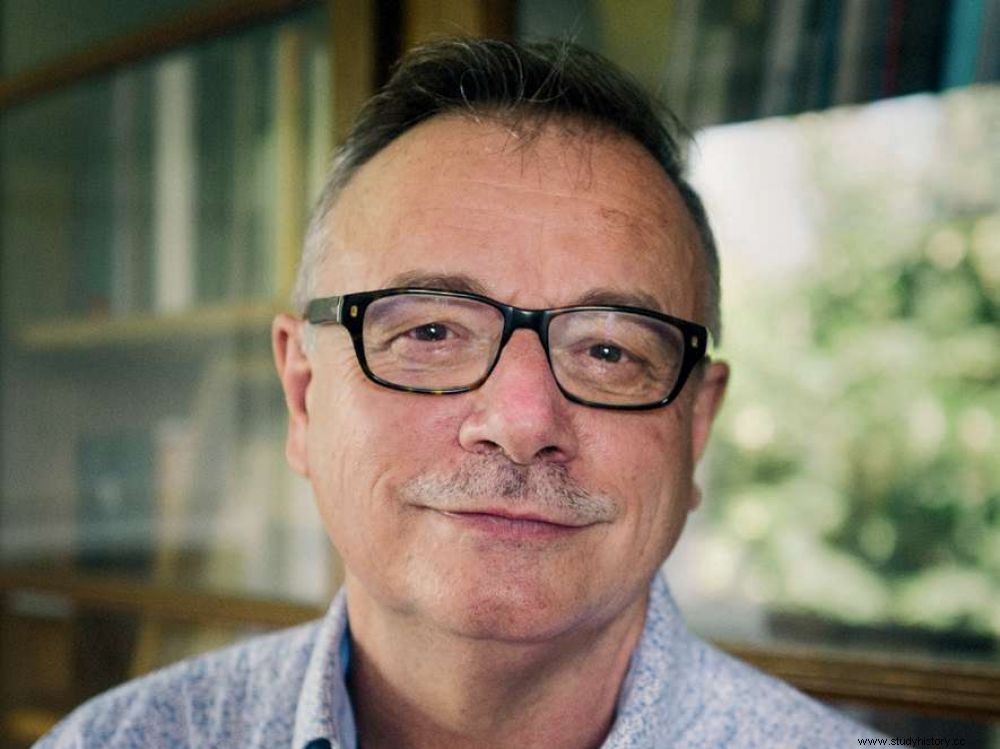Interview with Éric Crubézy, professor of biological anthropology at the University of Toulouse III - Paul Sabatier and specialist in funerary rites, for whom the appearance of the first burials marks the beginning of history.

Doctor and anthropologist, Éric Crubézy speaks during the Research and Creation Meetings at the Avignon Festival.
This article is from the magazine Sciences et Avenir - La Recherche n°893 dated July and August 2021.
Sciences et Avenir:Your conference at the Avignon Festival* begins with the example of a 60,000-year-old tomb decorated with flowers. What does it tell us?
Eric Crubézy: She reminds us that funeral rites are very old and are not the prerogative of our species since this tomb discovered in the cave of Shanidar, in Iraq, is that of a Neanderthal. Its existence confirms, with others, that this species practiced the burial of the dead. An idea that was discussed for more than a hundred years before being accepted. Demonstrating that flowers were placed there was not easy. In particular, the French scientist Arlette Leroi-Gourhan had to determine the concentration of pollen. For my part, I explored other tombs, this time belonging to sapiens , where it was easier. For example, in one of them in Egypt, 5000 years old, I found the remains of a bouquet.
In your last book**, you explain that flowers are part of the many rituals around the deceased. How are these structured?
Even if there is a great variability of rites in the face of death, we can isolate three stages. The first is to see the body in order to understand that the subject is deceased. It is a question of observing a resocialized body - dressed at home - which will remain in the memory of loved ones. Then, this body is hidden, either in a tomb or by a cremation which makes it disappear. Why hide? This is one of the most difficult problems to solve. Seeing allows you to begin to grasp absence, but understanding death is impossible, that's probably why at some point you have to hide. Finally, there is the sacralization which transforms the subject into a deceased. It can be purely psychic, when there is no trace of a body left, the ashes of which have been scattered, for example, in a river, but it can also be based on material elements. The tomb is thus a place of separation between the living and the dead.
Can we go back to the origins of this funerary typology?
With regard to observation, we can cite as an example certain great apes who linger around the corpses of their loved ones and seem saddened. After a while, they abandon the body:are these the beginnings of "hiding"? Hard to say ? On the other hand, sacralization involves the imagination, thinking about the deceased, talking about it. In short, making history. This is why I wrote that there are no prehistoric tombs:with the tomb, the metamorphosis, and therefore history, has already begun.
Some software now makes it possible to animate photos of the deceased and somehow bring the deceased back to life, what do you think?
This leaves me quite perplexed. Let's say that if the mourning is done or it is a question of reviving a historical figure like Napoleon, that does not pose a problem. When it comes to loved ones, evolution has picked out varied but necessary behaviors to get people to admit the death of another. These techniques that want to revive it while the mourning is not accomplished seem to me to go in the wrong direction.
* "The memory of the future" at the Avignon festival:The National Research Agency (ANR) and the Avignon festival organized the 8th edition of the Research and Creation Meetings on "the memory of the future", in partnership with Sciences et Avenir , July 8 and 9, 2021.
** At the origins of funeral rites:seeing, hiding, sanctifying . Odile Jacob, 2019.
